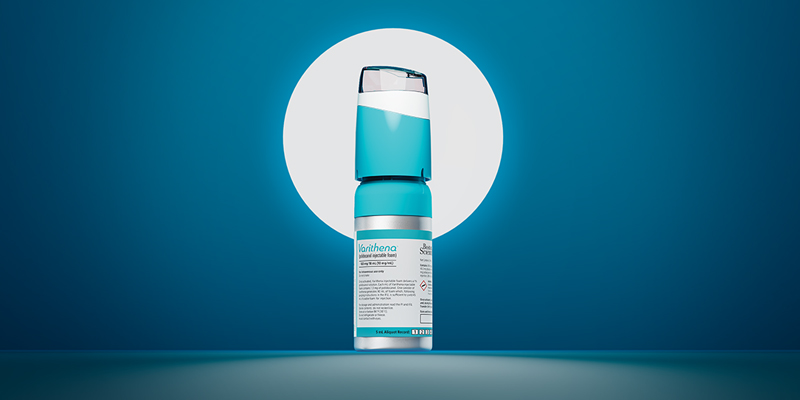Impressive results achieved time after time.
Proven results from more than 600,000 treatments performed by over 3,000 trained Varithena physicians. And there’s more on the way.
Dr. Deak's 2018 publication
Objective:
Evaluate safety and efficacy of Varithena among symptomatic patients with superficial chronic venous insufficiency.
Key results:
94.4%
of patients reported symptom relief.1
Dr. Carugo's 2016 study
Not all foam is created equal.
This study demonstrates the advantages of a pre-formulated foam compared to physician-compounded foam, why the former is more durable than the latter, and what that means for your patients.2

Polidocanol endovenous microfoam

Physician-compounded foam
Hear from a Varithena-trained physician.
At first, Dr. Juan Carlos Jimenez was skeptical of Varithena, but has since become a convert. Watch him speak about his experience, and his best practices.
Dr. Deak's 2021 publication
Objective: Evaluate outcomes among symptomatic patients with superficial venous insufficiency treated with Varithena or endovenous laser ablation (EVLA).
Key results:

Elimination of reflux was 93.5% and 92.8% of the Varithena and EVLA-treated patients.3
“Due to the tortuosity of the patient’s anatomy, Varithena gave me the best option to improve the patients’ symptoms and allow him to return to work with minimal downtime.”
- Ajit Naidu, MD
Dr. Vasquez's 2017 study
Key results: ETA and Varithena eliminated reflux through the SFJ in 87.3% of patients compared to 78.9% in ETA alone.4
Read how using Varithena with endovenous thermal ablation (ETA) yielded better results than using ETA alone, including lower retreatment rates and a higher percentage of patients with eliminated reflux.
Change in IPR-V3 score
IPR-V3: independent photography review of visible varicose veins

Dr. Jimenez's 2021 publication
With the use of these adjunctive techniques, this study demonstrated minimal deep venous thrombotic adverse events following microfoam ablation and lower ATE’s than reported in early Phase III clinical trials.5
1.5%
Non-occlusive extension of thrombus into the deep system
References
- Deak, Steven T. “Retrograde Administration of Ultrasound-Guided Endovenous Microfoam Chemical Ablation for the Treatment of Superficial Venous Insufficiency.” Journal of Vascular Surgery: Venous and Lymphatic Disorders, vol. 6, no. 4, July 2018, pp. 477–484., doi:https://doi.org/10.1016/j.jvsv.2018.03.015. The author is a consultant for Boston Scientific.
- Carugo D, Ankrett DN, Zhao X, et al. Phlebology: May 2016; 31(4):283-95.
- Deak ST. Treatment of superficial venous insufficiency in a large patient cohort with retrograde administration of ultrasound-guided polidocanol endovenous microfoam versus endovenous laser ablation. J Vasc Surg Venous Lymphat Disord. 2021 Dec 24:S2213-333X(21)00609-0. doi: 10.1016/j.jvsv.2021.11.007. Epub ahead of print. PMID: 34958977.
- Vasquez, Michael. “A multicenter, randomized, placebo-controlled trial of endovenous thermal ablation with or without polidocanol endovenous microfoam treatment in patients with great saphenous vein incompetence and visible varicosities.” Phlebology.2017 May;32(4):272-281. doi: 10.1177/0268355516637300. The author is a consultant for Boston Scientific.
- Jimenez JC, et al. Adjunctive techniques to minimize thrombotic complications following microfoam sclerotherapy of saphenous trunks and tributaries. J Vasc Surg Venous Lymphat Disord. 2021 Jul;9(4):904-909. Epub 2020 Nov 26. PMID: 33248297



